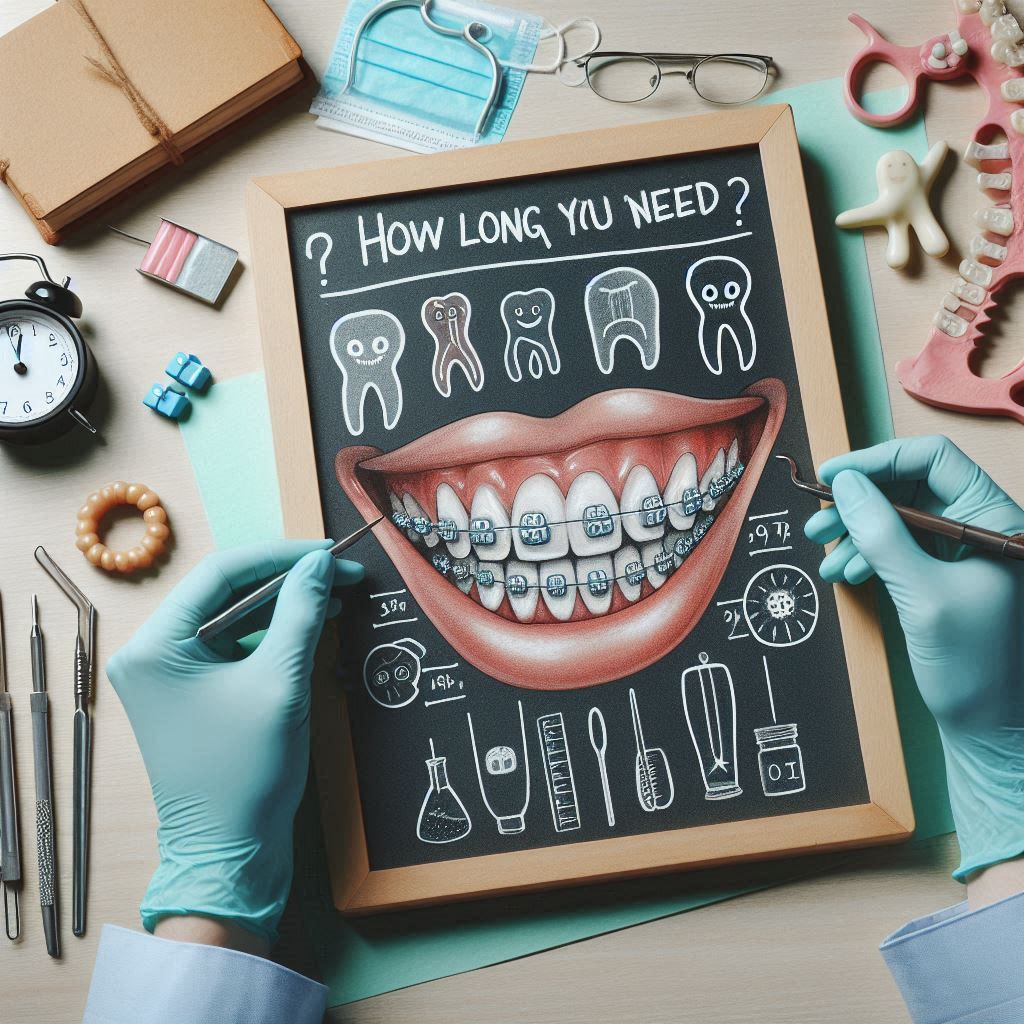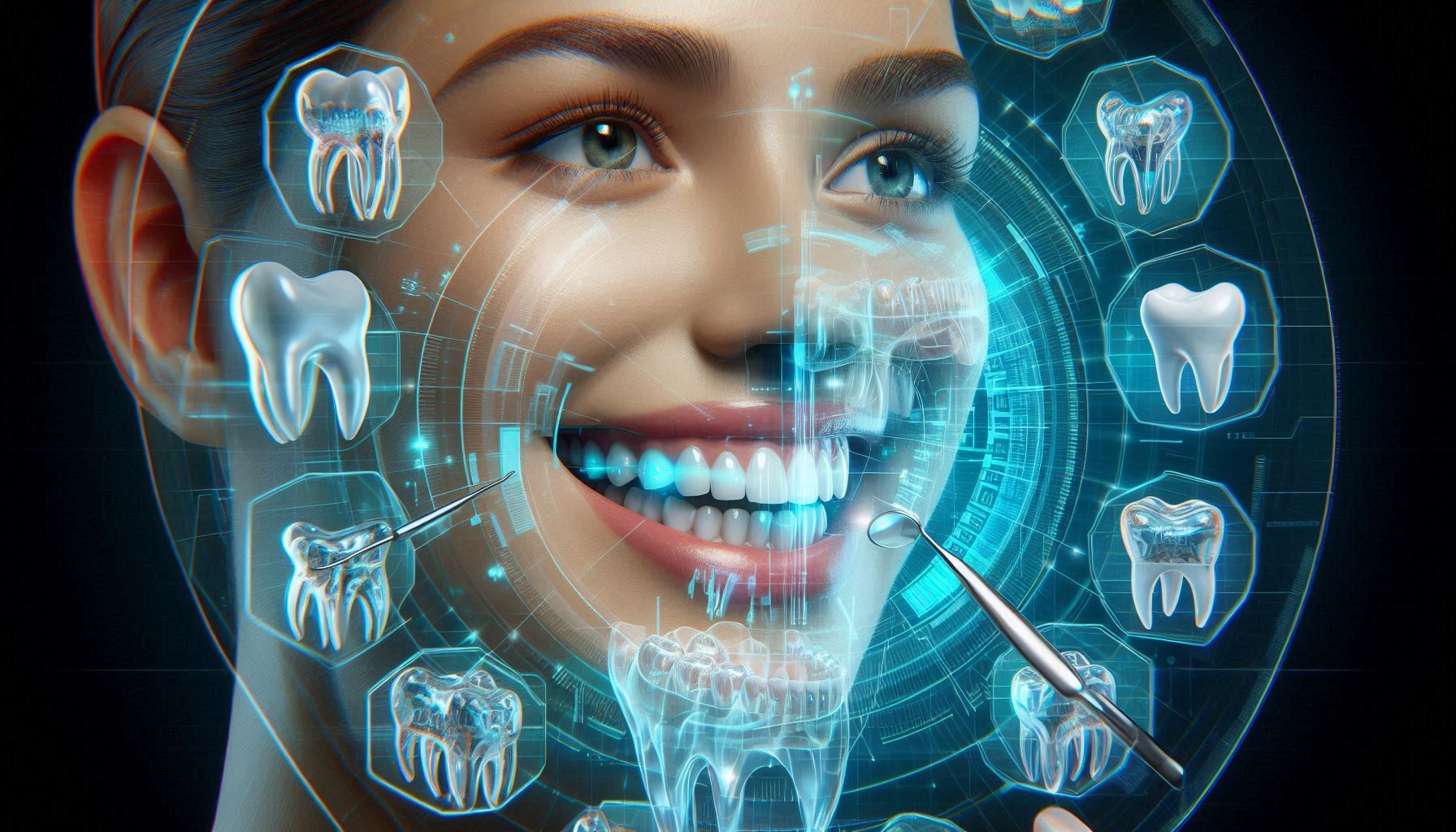Braces are one of the most common dental appliances used to improve the alignment and appearance of teeth. Whether you’re a teenager or an adult, the thought of wearing braces can be intimidating. However, the benefits—improved smile aesthetics, better bite functionality, and increased oral health—are often worth the time and effort.
One of the key concerns for anyone considering braces is how long the treatment will take. It’s a common question among patients, and the answer isn’t always straightforward. The duration of your braces treatment depends on various factors, including the type of dental issues you have, your age, the type of braces you wear, and your adherence to the orthodontist’s guidelines.
In this guide, we will explore the different factors that influence how long you will need braces, so you can better understand what to expect during your orthodontic journey. Whether you’re curious about the general timeline or how specific elements of your dental health can impact treatment, this guide will provide you with a comprehensive overview.
Understanding Braces
Before diving into how long you’ll need braces, it’s important to understand what braces are and how they work. Braces are devices that apply continuous pressure to your teeth to gradually move them into better alignment. This pressure, applied over time, encourages the bone surrounding your teeth to shift and reshape, making space for the teeth to align properly.
There are several different types of braces, each suited to different patient needs. Here’s an overview:
- Metal Braces: These are the traditional braces, consisting of metal brackets that are glued to the teeth, connected by wires and rubber bands. They are the most common and can be customized with different colors for the rubber bands.
- Ceramic Braces: These are similar to metal braces but use clear or tooth-colored ceramic brackets, making them less noticeable. They work in much the same way as metal braces but are preferred by patients who want a more discreet treatment.
- Lingual Braces: These braces are placed on the inside (tongue side) of the teeth, making them virtually invisible. They’re not as commonly used as traditional braces but are a great option for those looking for a less visible alternative.
- Clear Aligners (e.g., Invisalign): Clear aligners are a popular alternative to traditional braces, consisting of clear, removable trays that gradually shift the teeth. They are typically used for mild to moderate orthodontic issues.
How Braces Work
Regardless of the type, braces follow the same general process:
- Initial Consultation: The orthodontist will examine your teeth, take X-rays and impressions, and discuss your treatment goals.
- Braces Placement: Once your treatment plan is developed, the braces are placed on your teeth. This process can take anywhere from one to two hours.
- Adjustments: Every 4 to 8 weeks, you’ll return to the orthodontist for adjustments. These visits allow the orthodontist to tighten the wires, change the rubber bands, or replace components as needed.
- Braces Removal: Once your teeth are aligned, the braces are removed. This marks the end of the active treatment phase, but your orthodontist will likely recommend wearing a retainer to maintain your newly aligned teeth.
Average Duration of Braces Treatment
For many patients, the question of how long they’ll need to wear braces is a top concern. On average, braces treatment lasts between 18 to 24 months. However, treatment can sometimes be shorter or longer, depending on various factors.
- Typical Range: Most patients will complete their orthodontic treatment within this range, but it’s important to understand that this is only an average. Some people might be able to finish their treatment in 12 to 18 months, while others may need 30 months or more.
- Why Treatment Time Varies: Several variables play a role in how long you’ll need to wear braces, including the severity of your dental issues, the type of braces used, and how well you follow the treatment guidelines provided by your orthodontist.
- Children vs. Adults: Treatment duration can also vary depending on the patient’s age. Children and teenagers tend to have faster treatment times compared to adults because their jaws and teeth are still growing and are more responsive to movement. Adult patients may experience longer treatment durations because their jaws are fully developed and are less malleable.
Now, let’s explore the key factors that affect how long you will need braces.
Key Factors That Influence How Long You Will Need Braces
- AgeAge is one of the most significant factors that influence the duration of braces treatment. While braces work for both children and adults, there are key differences between the two:
- Children and Teenagers: Since younger patients are still in the midst of their growth and development, their bones are more pliable and respond more quickly to orthodontic treatment. For children and teens, the duration of braces treatment is typically shorter, averaging 18 months.
- Adults: Adult patients, however, may take longer to complete their orthodontic treatment. This is because adult teeth and bones are fully developed and harder to move. Consequently, orthodontists might need to take more time to achieve the desired results. Additionally, adult patients may have other dental issues, such as missing teeth or worn-down enamel, which can add to treatment complexity.
- Severity of the Dental IssueThe severity of your dental issue plays a huge role in determining how long braces will be needed. Common orthodontic issues include:
- Overbite/Underbite: These are issues where the upper and lower teeth don’t meet properly. Correcting these issues may require more time, especially if the bite misalignment is significant.
- Crossbite: This occurs when one or more of your upper teeth bite on the inside of the lower teeth. Depending on the severity of the crossbite, treatment time can vary.
- Crowding: If there is insufficient space in your mouth for all your teeth, you might need to move teeth to create space. Severe crowding can require a longer treatment time.
- Spacing Issues: Some people have large gaps between their teeth. While this may seem like a minor problem, it can still require time to shift the teeth into proper alignment.
For minor issues, such as slight crowding or small gaps, treatment time can be relatively short. More complex problems, such as severe overbites, underbites, or jaw misalignments, can take several years to correct.
- Type of BracesThe type of braces you choose can also affect the duration of treatment. Here’s how different braces compare:
- Metal Braces: These are the traditional braces and tend to be the most effective at correcting severe dental problems. Because they are highly customizable and work on most types of misalignment, metal braces can be quicker than other options.
- Ceramic Braces: Similar to metal braces, ceramic braces are effective, but they are often slightly slower in terms of results due to the material’s flexibility.
- Clear Aligners (e.g., Invisalign): These braces work well for mild to moderate cases, such as small gaps or slight misalignment. However, they are generally slower than metal braces for more complicated issues. Clear aligners also require a high level of patient compliance, as they need to be worn for 20 to 22 hours a day.
In general, traditional metal braces tend to work faster than clear aligners, but they are also more noticeable. If you opt for clear aligners, it’s important to be prepared for a longer treatment duration.
- Compliance with Treatment InstructionsOne of the most significant factors in determining the length of your braces treatment is how well you follow your orthodontist’s instructions. This includes:
- Wearing Elastics: Many patients are prescribed elastics to help shift their teeth and jaw into the correct position. Failure to wear these as directed can extend the treatment time.
- Dietary Restrictions: Sticky, hard, or chewy foods can damage your braces, making it essential to follow dietary restrictions. Damage to the braces means more frequent repairs and longer treatment time.
- Attending Appointments: Regular visits to your orthodontist are critical. Missing appointments or delaying adjustments can delay progress and extend the overall treatment time.
The more compliant you are with the instructions given by your orthodontist, the more likely your treatment will stay on schedule.
- Treatment Plan and Orthodontist ExpertiseEach patient requires a personalized treatment plan, which includes the types of braces, the necessary adjustments, and any other treatments required. The effectiveness and duration of this plan depend largely on the experience and expertise of your orthodontist. An experienced orthodontist can often complete your treatment in a more efficient manner because they can foresee potential issues and know how to avoid delays.
- Frequency of AppointmentsMost patients visit their orthodontist every 4 to 8 weeks. These appointments allow the orthodontist to tighten wires, replace rubber bands, or make any necessary adjustments. Missing appointments or not attending them on time can cause delays in your treatment and increase the overall time needed to achieve your desired results.
- Lifestyle and Oral HygieneMaintaining good oral hygiene throughout your braces treatment is essential. If you develop gum disease, cavities, or other oral health issues, it can delay treatment. Problems with teeth or gums may require additional dental procedures, which can extend the length of time you need to wear braces.
Similarly, lifestyle factors—such as smoking or poor nutrition—can negatively impact your oral health and treatment duration.
- Growth and DevelopmentFor younger patients, their jaws and teeth are still growing, which is a major advantage when it comes to orthodontic treatment. The orthodontist can harness this growth to more effectively align the teeth. For adults, who no longer have growing bones, treatment can take longer and may require more aggressive methods to shift teeth.
Other Factors That Can Affect Braces Duration
While the factors mentioned above are the most common, there are other considerations that might impact your treatment:
- Medical Conditions: Certain medical conditions, such as autoimmune diseases, can affect bone health and make orthodontic treatment more difficult. If you’re taking medications that affect your bones or dental health, it might impact your treatment.
- Need for Additional Dental Treatments: Some patients may need tooth extractions, gum treatments, or other dental procedures before or during their braces treatment. These additional steps can lengthen the overall time.
How to Shorten Your Treatment Time
While there’s no magic trick to drastically shorten your braces treatment time, there are a few things you can do to speed up the process:
- Follow Your Orthodontist’s Instructions: This is the most important factor in ensuring that your braces treatment proceeds on schedule. Be diligent about wearing any prescribed devices (like elastics), attending appointments, and maintaining good oral hygiene.
- Accelerated Orthodontic Techniques: Some orthodontists offer accelerated treatments like AcceleDent or Propel, which involve using devices or technologies that stimulate tooth movement and can help reduce treatment time.
- Clear Aligners with Advanced Features: If you’re using clear aligners, opting for models with advanced features (such as SmartTrack technology) may speed up your treatment slightly, as these can apply more targeted pressure to the teeth.
The Final Stages of Braces Treatment
After your braces are removed, the final phase of orthodontic treatment begins: retention. During this phase, a retainer is provided to help maintain the new position of your teeth. Wearing the retainer as instructed is essential to prevent your teeth from shifting back to their original positions. Initially, you may need to wear the retainer full-time, especially during the first few months after braces are removed. As time passes, your orthodontist may advise reducing wear to nighttime only. This step is critical to ensuring that the results of your treatment are preserved long-term. Retainers are designed to keep your teeth stable as the surrounding bone and tissues adjust to their new alignment. Following your orthodontist’s guidelines during this phase is vital for the lasting success of your orthodontic treatment and the continued health of your smile.
Conclusion
The duration of your braces treatment depends on a combination of factors, including age, the severity of your dental issue, the type of braces you choose, and how well you follow your orthodontist’s instructions. On average, braces treatment lasts 18 to 24 months, but this can vary significantly from one patient to another. The most important thing is to stay committed to your treatment plan, maintain good oral hygiene, and attend all your scheduled appointments. By doing so, you can help ensure that your treatment stays on track and that your smile is straightened as efficiently as possible. Consulting with an orthodontist for a personalized treatment plan is the best way to understand how long you can expect your braces treatment to take and to receive tailored advice on the best options for your specific situation.
SOURCES
American Association of Orthodontists. (2020). Orthodontic treatment: A guide for patients and families. American Association of Orthodontists.
Benson, P. E., & McDonald, F. (2019). Orthodontic treatment in children and adults: The latest techniques and strategies. Oxford University Press.
Graber, T. M., Vanarsdall, R. L., & Vig, K. W. (2017). Orthodontics: Current principles and techniques (5th ed.). Elsevier.
Hawley, C., & Arnett, G. W. (2018). The influence of age on orthodontic treatment outcomes. Journal of Clinical Orthodontics, 52(7), 435-442.
Punt, J., Vervoorn, C., & Parker, L. (2017). Factors affecting orthodontic treatment duration: A meta-analysis of patient and treatment characteristics. International Journal of Orthodontics, 39(4), 225-231.
Sadowsky, C., Migliorati, M., & Jones, J. (2016). Braces and clear aligners: A comparison of treatment duration and effectiveness. The American Journal of Orthodontics, 151(5), 1161-1168.
Stuart, M. S., Miller, L. M., & Smith, R. G. (2015). Orthodontics for adults: An updated approach to treatment. Springer.
Weinstein, L. M., Gittings, P., & Jones, D. (2018). The role of patient compliance in orthodontic treatment time: A longitudinal study. Journal of Orthodontic Research, 48(2), 100-106.
White, L., & Proffit, W. R. (2021). Contemporary orthodontics (6th ed.). Elsevier.
Zachrisson, B. U., Lindauer, S. J., & Roth, R. H. (2020). The latest developments in orthodontic techniques: What you need to know. Journal of Clinical Orthodontics, 54(6), 320-328.
HISTORY
Current Version
February 13, 2025
Written By:
SUMMIYAH MAHMOOD




